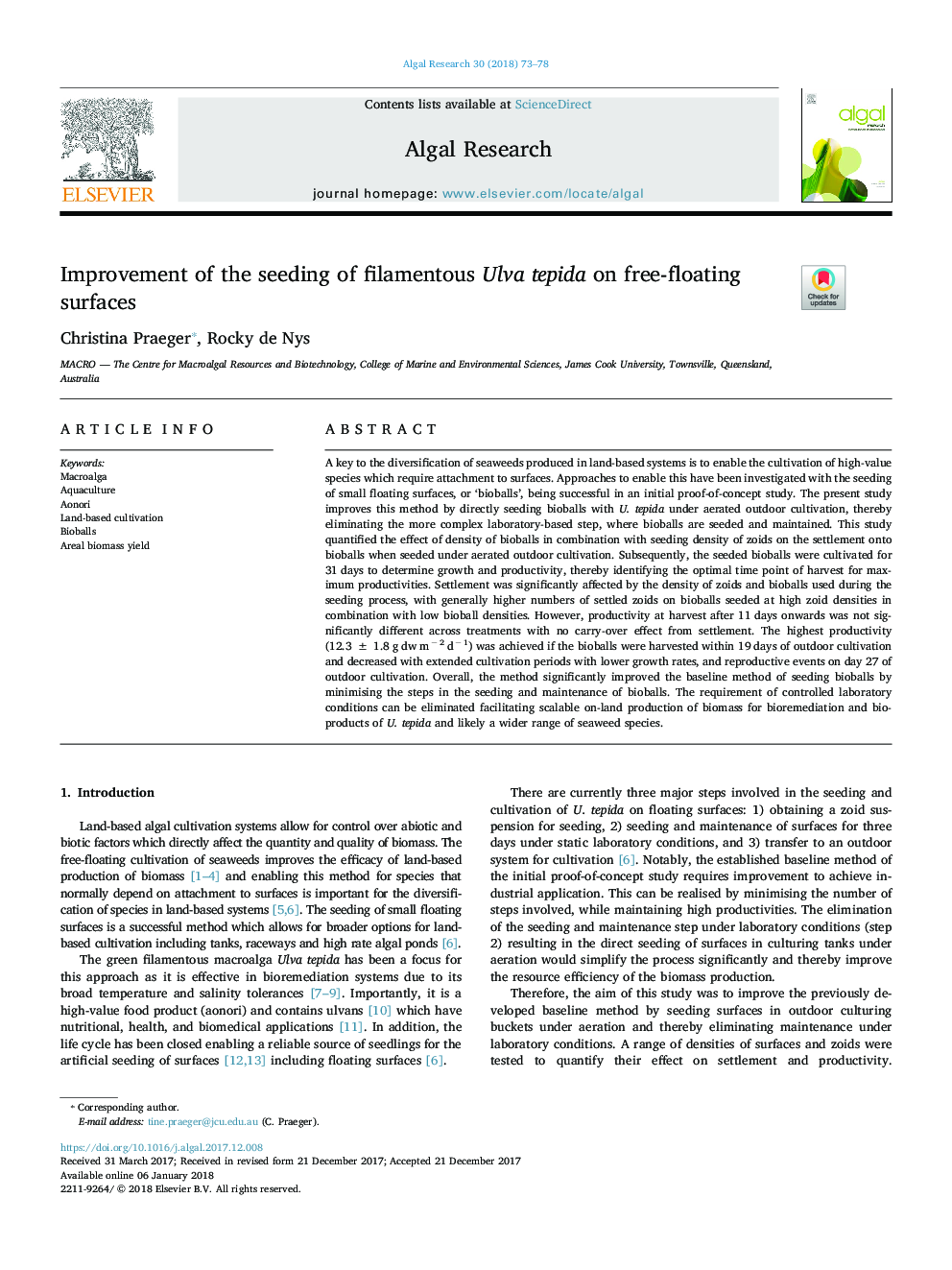| کد مقاله | کد نشریه | سال انتشار | مقاله انگلیسی | نسخه تمام متن |
|---|---|---|---|---|
| 8086090 | 1521803 | 2018 | 6 صفحه PDF | دانلود رایگان |
عنوان انگلیسی مقاله ISI
Improvement of the seeding of filamentous Ulva tepida on free-floating surfaces
دانلود مقاله + سفارش ترجمه
دانلود مقاله ISI انگلیسی
رایگان برای ایرانیان
کلمات کلیدی
موضوعات مرتبط
مهندسی و علوم پایه
مهندسی انرژی
انرژی های تجدید پذیر، توسعه پایدار و محیط زیست
پیش نمایش صفحه اول مقاله

چکیده انگلیسی
A key to the diversification of seaweeds produced in land-based systems is to enable the cultivation of high-value species which require attachment to surfaces. Approaches to enable this have been investigated with the seeding of small floating surfaces, or 'bioballs', being successful in an initial proof-of-concept study. The present study improves this method by directly seeding bioballs with U. tepida under aerated outdoor cultivation, thereby eliminating the more complex laboratory-based step, where bioballs are seeded and maintained. This study quantified the effect of density of bioballs in combination with seeding density of zoids on the settlement onto bioballs when seeded under aerated outdoor cultivation. Subsequently, the seeded bioballs were cultivated for 31 days to determine growth and productivity, thereby identifying the optimal time point of harvest for maximum productivities. Settlement was significantly affected by the density of zoids and bioballs used during the seeding process, with generally higher numbers of settled zoids on bioballs seeded at high zoid densities in combination with low bioball densities. However, productivity at harvest after 11 days onwards was not significantly different across treatments with no carry-over effect from settlement. The highest productivity (12.3 ± 1.8 g dw mâ 2 dâ 1) was achieved if the bioballs were harvested within 19 days of outdoor cultivation and decreased with extended cultivation periods with lower growth rates, and reproductive events on day 27 of outdoor cultivation. Overall, the method significantly improved the baseline method of seeding bioballs by minimising the steps in the seeding and maintenance of bioballs. The requirement of controlled laboratory conditions can be eliminated facilitating scalable on-land production of biomass for bioremediation and bio-products of U. tepida and likely a wider range of seaweed species.
ناشر
Database: Elsevier - ScienceDirect (ساینس دایرکت)
Journal: Algal Research - Volume 30, March 2018, Pages 73-78
Journal: Algal Research - Volume 30, March 2018, Pages 73-78
نویسندگان
Christina Praeger, Rocky de Nys,